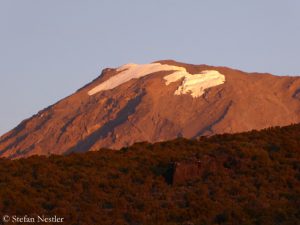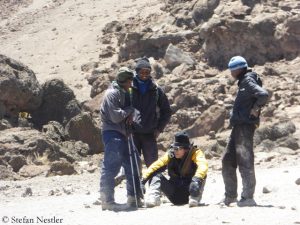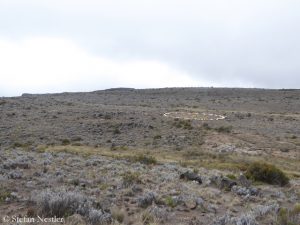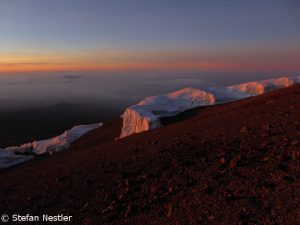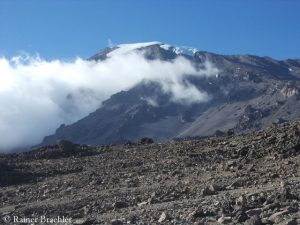Missing on Kili: Humility and respect
The summit certificate is lying at home, so I could actually tick off Kilimanjaro. But Africa’s highest mountain is still on my mind half a week after my return home. My feelings were too ambiguous during the eight days on the highest mountain in Africa. On the one hand I was able to experience hospitable and helpful Tanzanians, a harmonious expedition team and a really impressive nature. The ascent through the various vegetation levels gave me many unforgettable moments. On the other hand, I realized once more the downsides of mass tourism on the mountains.
Human waste along the way
Even though about 30,000 people try to climb Mount Kilimanjaro every year, there is neither a coherent plan for hygiene nor for waste disposal. For example, at the Kibo Hut, at 4700 meters, there are some simple toilets, but there is no water to wash your hands. The few toilet shacks along the Marangu route are little more than spoilage. Behind almost every boulder next to the path lie human excrements and toilet paper. In addition, many summit aspirants throw away their garbage thoughtlessly.
Better chances for fat people?!
Never before I have seen on a mountain so many unreasonable summit aspirants overestimating themselves as on the almost six-thousander, located south of the equator. For example, the British teenager who was reeling already at about 4000 meters, with glassy eyes. He said he was just tired. His expedition leader first ignored our suggestion that the boy was suffering from high altitude sickness. The same expedition leader had told me the day before that according to his experience, fat people had a particularly good chance of reaching the summit. The reason he gave: Fat people were also moving slowly in everyday life, and that was just the right tactic on Kilimanjaro.
Wheeled stretchers in continuous use
I saw Koreans, who looked as exhausted after the ascent to Kibo Hut as Hermann Buhl in 1953 after his legendary solo summit push on Nanga Parbat. A few hours later, they headed for Uhuru Peak, filled with Diamox, as the empty blister packs on the toilet proved. Some had to be carried down the mountain and then transported downhill with wheeled stretchers. No day passed without such rescue operations. Even though there is not yet a mountain rescue in the narrower sense on Kili. Hyperbaric bags for first aid at the Kibo Hut? None. When our doctor from the University of Marburg temporarily used bottled oxygen to treat a man suffering from high altitude sickness, he was asked by the suddenly very nervous officer on the spot whether the patient really was in mortal danger.
Landing sites, but no helicopters
Although there are some helicopter landing sites on the Marangu route, they are so far only used by birds. After being transported down with the wheeled stretcher, the altitude-sick people are loaded into a jeep above Horombo Hut at 3,700 meters and driven down a dusty piste to the lowlands. Serious cases can only be treated in the University Hospital of Moshi. The transport takes a lot of time, which can decide about life or death in an extreme emergency.
Deaths are hushed up
About the climbers who die on Mount Kilimanjaro from high altitude sickness is only spoken behind closed doors. In the week before our arrival at the Horombo Hut two climbers had died there after their summit success, we were told. The two had gone to sleep and did not wake up again. Had they overestimated themselves and underestimated the alleged “hiking mountain”, like so many others on Kilimanjaro? I met summiteers who reached the highest point in just three (!) days. Most took five days to overcome the about 4.000 meters to the summit – to short to properly acclimatize.
Main thing: the summit certificate
Above all, I missed two things on Kilimanjaro: humility and respect. Humility before the technically easy, but nevertheless high mountain. Respect for the limits of one’s own ability to perform and the possibility of suffering from high altitude sickness. Humility before nature, which we should consider as a gift. Respect for the local guides, who have so much more Kili experience than the guests from abroad. Instead: with tunnel vision to the summit, the main thing is that the summit certificate is soon hanging on the wall.



